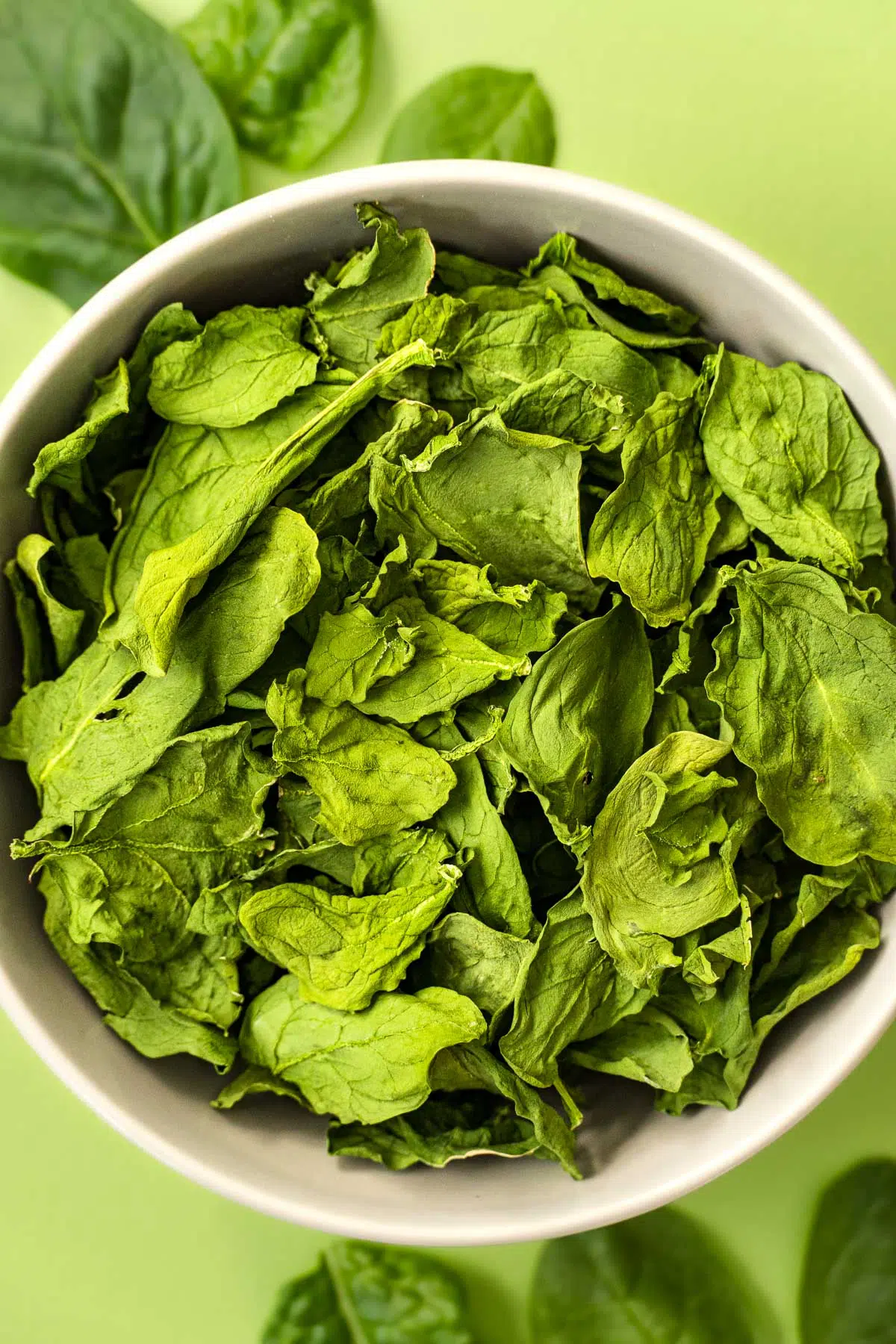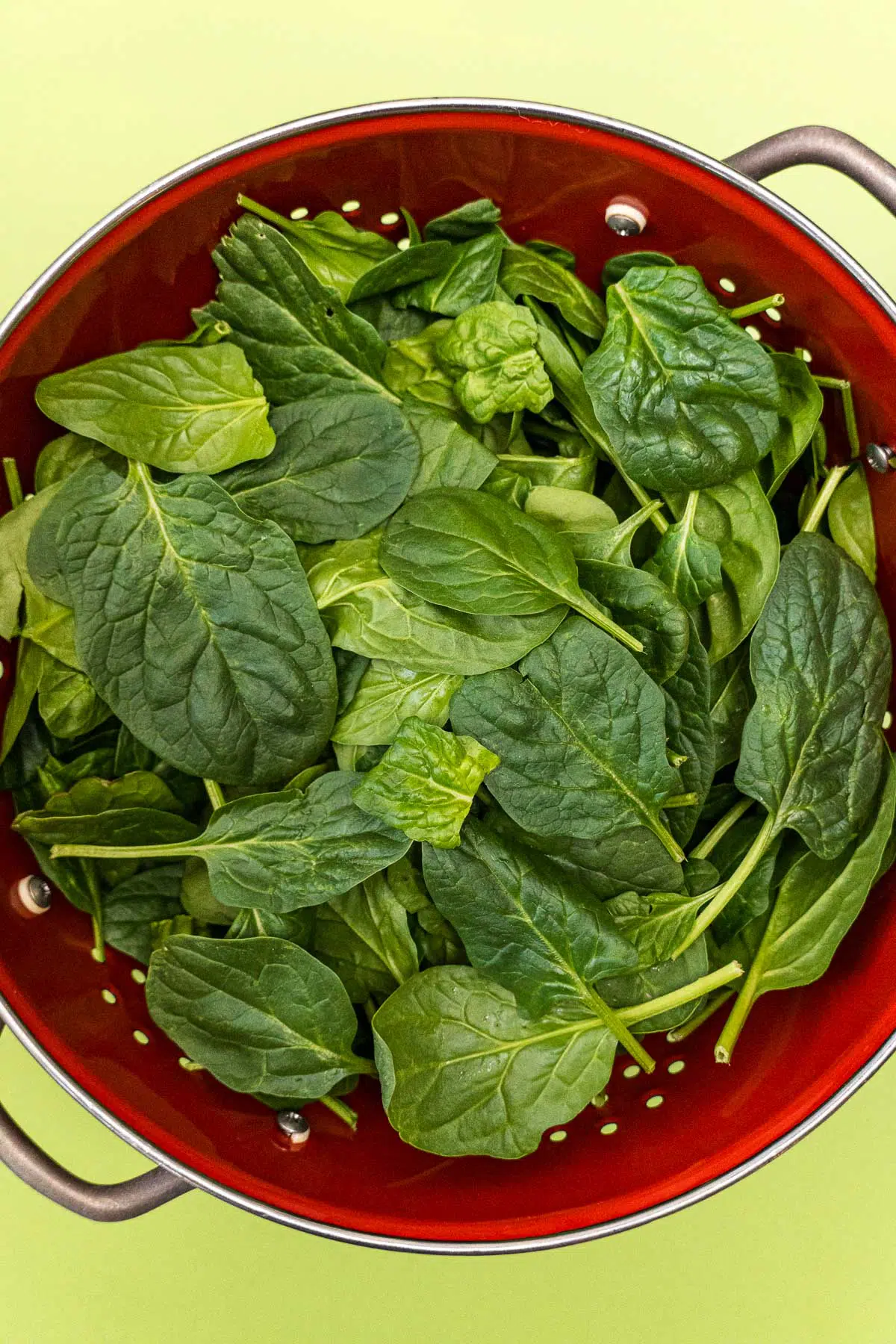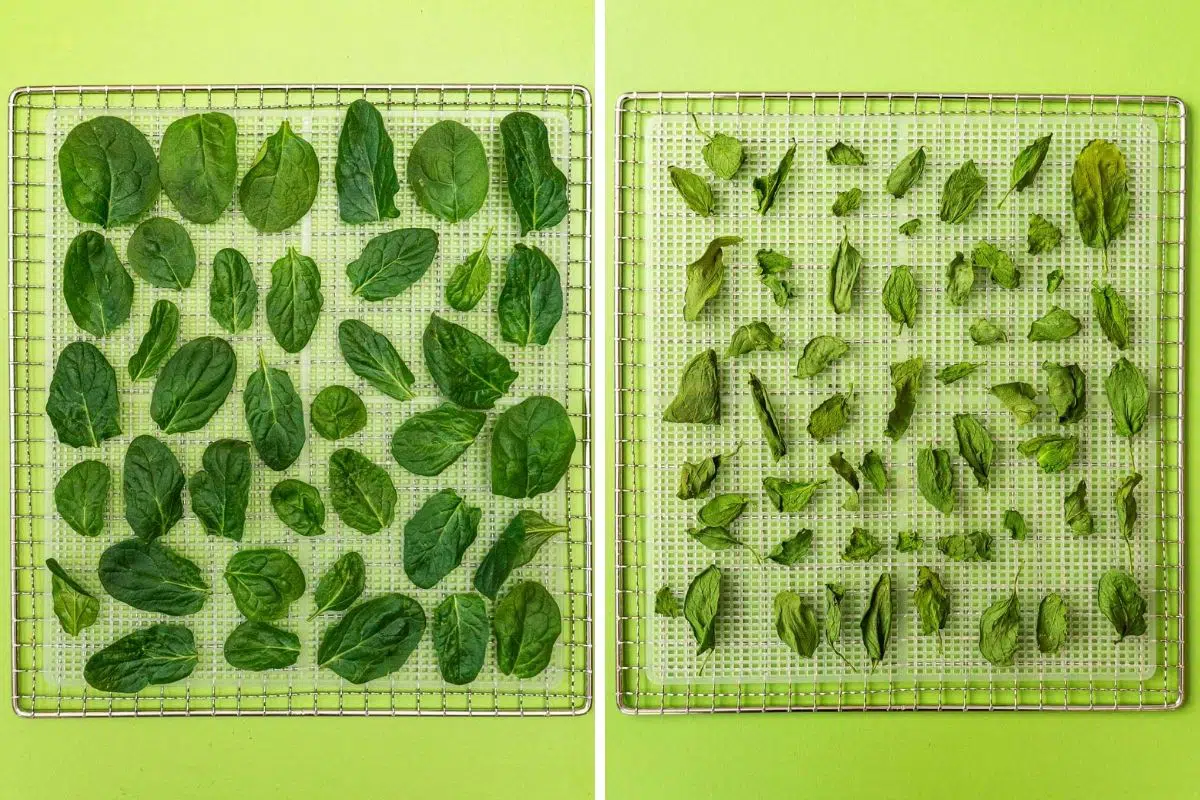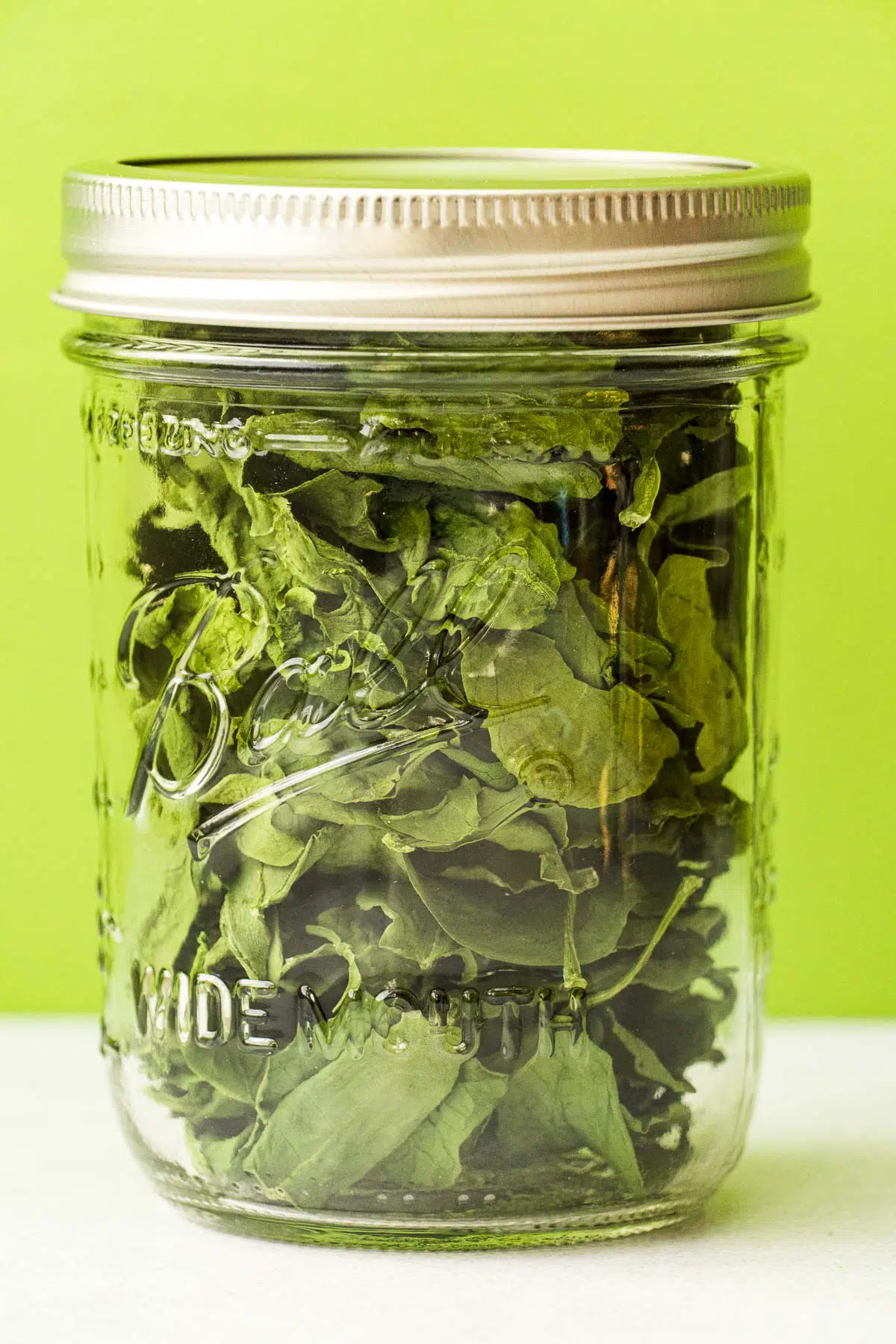How to Dehydrate Spinach
This post may contain affiliate links.
Dehydrating spinach is a great way to preserve this powerhouse leafy green so you’ll always have it on hand in the pantry. Learn everything you need to know to dehydrate spinach in this post!

Spinach is a superstar leafy green. It’s loaded with nutrients like Vitamin A, Vitamin C, Vitamin K, calcium, iron, folate, and potassium, and contains a high amount of fiber and protein. We love to add spinach to meals like pasta, curry, soups, and eggs. It wilts down a lot, so you can get a lot of it into a meal without overwhelming it. Dehydrated spinach is also a great way to incorporate some leafy greens into your camping and backpacking meals!
While there is a lot we love about spinach, one thing we’ve noticed is how quickly it spoils after being opened. That’s why it’s a great idea to consider dehydrating it! Not only will you be able to add it to meals at your leisure, but you will help cut down on food waste.
So if you’ve found a great deal on organic spinach, but don’t think you’ll eat it all before it starts to turn, just put half of it in the dehydrator when you get home. Spinach dehydrates really well and, if properly stored, can remain shelf-stable for six months or more.
So let’s dive in and show you everything you need to know about dehydrating spinach at home!

Prepping Spinach to Dehydrate
Before you start prepping your spinach, make sure your counters, equipment, and hands are clean & sanitized to prevent contamination, which can spoil your batch down the line.
- Wash your spinach and dry it—a salad spinner works best, but you can also gently pat it dry with a kitchen towel
- Remove any damaged or wilted leaves and pick off any large stems
- Spinach does not need to be blanched or pre-cooked

How to Dehydrate Spinach
Dehydrating spinach is super simple. Once your counters, equipment, and hands are clean, set up your dehydrator and follow these steps:
- Arrange the spinach on your dehydrator trays. Leave some space for air to circulate—it’s ok for the leaves to overlap a little but don’t pile it on too much.
- Dehydrate at 125ºF (52ºC) for 4-8 hours until the spinach is dry—it should crumble easily.
- Depending on your machine, you may need to rotate the trays every so often to promote even drying.
Equipment Spotlight: Dehydrators
If you’re in the market for a dehydrator, we recommend buying one with an adjustable temperature. This will allow you to dial in the drying temp to give you the best results for individual ingredients. The dehydrator we recommend (and use) most often is the COSORI Premium. You can also check out our best dehydrators post for a comparison of all the dehydrators we’ve used and would recommend.
How to Tell When Spinach is Done
Spinach will be totally dry and “crispy” when it’s fully dehydrated—it will easily crumble. To test, take a few leaves out of the dehydrator and let them cool. If they show any signs of remaining moisture or bends instead of crumbling, let it run in the dehydrator for longer.

How to store dehydrated spinach
When properly dried and stored, dehydrated spinach can last six months or more. Here are our tips for storage:
- Let the spinach cool completely before transferring it.
- Store in a clean, airtight container. For longer shelf life, vacuum seal.
- Use a moisture absorbing desiccant packet if you anticipate opening the container often, or if you live in an area with high humidity (especially if you’re going to store it as a powder).
- Label the container with the date and any other important details
- Place the container in a cool, dark, and dry place—inside of a pantry cabinet works well.
Vacuum sealing tips
We like to store our dehydrated food in mason jars that have been vacuum-sealed using this handheld

How to Use
To rehydrate spinach, place it in a bowl and cover it with boiling water. Let it sit until tender (usually just a few minutes!). It won’t return to the same texture as fresh, raw spinach (don’t plan on using it in a salad) but will be very similar to cooked or thawed frozen spinach.
Here are a few ideas on how to use your dehydrated spinach:
- Add to curries, soups, or casseroles
- Powder it to add to green smoothies
- Saute with mushrooms and garlic for a quick side dish
- Include rehydrated spinach in scrambled eggs, an omelette, or frittata
- Use it as a filling for Spinach & Cheese Stuffed Shells
- Add it to spinach artichoke dip
- Use it in these backpacking meal recipes:

Equipment
- Airtight storage container
- Vacuum sealer (optional)
Ingredients
- 1 pound spinach, see note 1
Instructions
- Start with clean hands, equipment, and countertops.
- Wash the spinach and dry using a salad spinner or kitchen towel.
- Removed damaged or wilted leaves and pick off large stems.
- Spread the spinach out on your dehydrator trays, avoiding any large mound of leaves.
- Dehydrate at 125ºF (52ºC) for 4-6 hours until the spinach is dry (see note 2).
Storage Tips
- Let the dried spinach cool completely before storing.
- Short-term storage: If spinach will be consumed within a few weeks, store in a ziptop bag or sealed container on the counter or in a pantry.
- Long-term storage: Condition by loosely packing the dried spinach in a transparent, airtight container. Leave it on the counter for a week and check it daily for signs of moisture. If condensation appears, return the spinach to the dehydrator (unless there are signs of mold—then, throw out the whole batch).
- After conditioning, store in an airtight container in a cool, dark place for up to six months. Vacuum sealing will help extend the shelf life and quality of the spinach.
